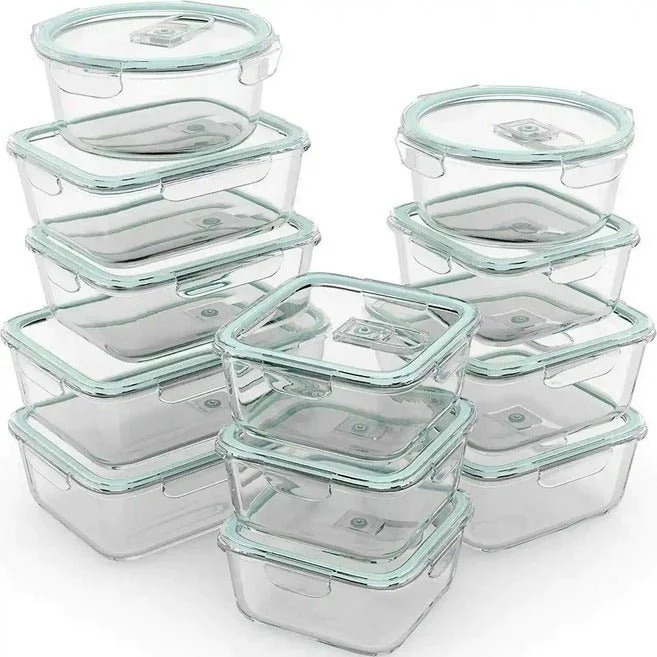Introduction
So, you’ve decided to dive into the world of meal prepping. That’s awesome! But now you’re staring at a bunch of containers and wondering, “How big should meal prep containers be?” Don’t worry, you’re not alone. Choosing the right size can make or break your meal prep game. Let’s break it down together.
Importance of Meal Prep
Meal prep isn’t just a trendy buzzword. It’s a game changer. Whether you’re trying to save time, money, or just eat healthier, meal prepping can be your best friend.
Benefits of Meal Prep
Meal prepping helps you stick to your diet plan. When your meals are ready to go, you’re less likely to grab something unhealthy. It also saves you time during the week. Just think about it: no more scrambling to throw together a lunch before work. Plus, it can save you money since buying in bulk is usually cheaper.
Common Mistakes in Meal Prep
One common mistake? Using the wrong container size. If your containers are too big, you might overeat. Too small, and you might end up hungry. Finding that Goldilocks “just right” size is key.
Check: Does Meal Prep Reduce Nutrition in Food
Factors to Consider When Choosing Container Size
Choosing the right size container isn’t one-size-fits-all (pun intended). Here are a few things to think about.
Type of Meals
What kind of meals are you prepping? Salads need more space than a portion of rice and chicken. Soups? They need deep containers to avoid spills. Think about what you’ll be eating.
Portion Sizes
How much do you usually eat? If you’re someone who likes big portions, you’ll need larger containers. If you’re watching your portion sizes, smaller containers can help you stay on track.
Frequency of Meals
How often do you eat? If you’re prepping for three meals a day, you might need a variety of sizes. Breakfast could be a smoothie (small container) while dinner might be a hearty stew (larger container).
Storage Space
Do you have a big fridge or a small one? Your available storage space can dictate container size. No point in having huge containers if they won’t fit in your fridge.
Standard Sizes of Meal Prep Containers
Meal prep containers come in a variety of sizes. Here’s a quick rundown of the most common ones.
Small Containers
These are great for snacks or small side dishes. Think 1-2 cups in size. Perfect for fruits, nuts, or a side salad.
Medium Containers
Your go-to for most meals. They usually hold about 3-4 cups. Ideal for a balanced meal with protein, carbs, and veggies.
Large Containers
Perfect for big meals or if you’re prepping for multiple people. These can hold 5 cups or more. Great for batch cooking.
Specialized Containers
Sometimes, you need something a bit more specialized.
Compartments and Dividers
These are fantastic if you want to keep your foods separate. No one likes soggy salad! Containers with compartments or dividers are perfect for keeping things fresh.
Stackable Containers
If space is a premium, stackable containers are a lifesaver. They save space and make your fridge look organized.
Material Considerations
The material of your containers can also affect your choice. Here are the main types.
Plastic Containers
Lightweight and affordable. They’re great for freezing but can stain and retain odors.
Sturdy and stain-resistant. Glass Food Storage Container don’t retain odors and are microwave safe. But they can be heavy and breakable.
Stainless Steel Containers
Durable and long-lasting. They don’t stain or retain odors. However, they’re not microwave safe.
Practical Tips for Choosing the Right Size
Here are some practical tips to help you choose the right size.
Assessing Your Needs
Think about your lifestyle. Are you always on the go? Do you need something portable? Or do you eat most meals at home? Your lifestyle can guide your choice.
Trial and Error
Don’t be afraid to experiment. You might need to try a few different sizes before finding the perfect one. And that’s okay! It’s all part of the process.
Conclusion
Choosing the right size meal prep container can make your life so much easier. It’s all about finding what works best for you. Consider your meals, portion sizes, and storage space. And don’t be afraid to try different sizes until you find your perfect match. Happy meal prepping!
FAQs
Q1: Can I use the same size container for all my meals?
A: It’s possible, but not always practical. Different meals might require different sizes.
Q2: Are glass containers better than plastic ones?
A: It depends on your needs. Glass is more durable and doesn’t retain odors, but plastic is lighter and more affordable.
Q3: How do I prevent my food from getting soggy in containers?
A: Use containers with compartments or dividers to keep wet and dry ingredients separate.
Q4: Can I freeze meals in any type of container?
A: Most containers are freezer-safe, but plastic ones are usually better for freezing as they can handle expansion.
Q5: How do I clean my meal prep containers effectively?
A: Most can be cleaned in the dishwasher, but check the manufacturer’s instructions. For tough stains, a baking soda and water paste works wonders.
